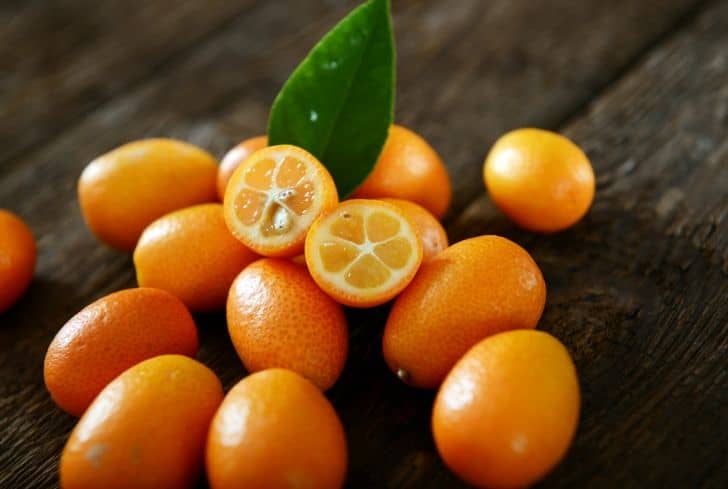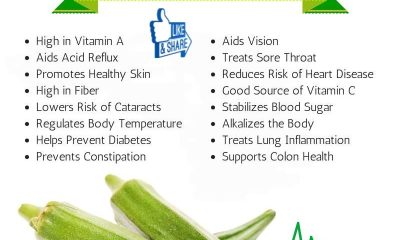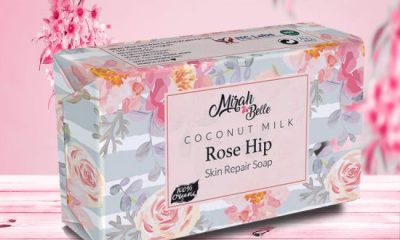Health
9 benefits of maple syrup

Discover the 9 benefits of maple syrup.
Most people already consume a lot of sugar, probably even much more than they need.
With that said, maple syrup is one of the sweeteners you should use in small amounts and a good alternative to cane sugar when used in moderation.
Do you love maple syrup? See all the nutritional benefits in this guide.
Like the contrast between whole and refined grains, natural, unrefined sweeteners like maple syrup contain higher levels of beneficial nutrients, antioxidants, and phytochemicals than white table sugar or high-fructose corn syrup.
This is also why we see the many health benefits of raw honey. When used in appropriate amounts, the nutritional benefits of maple syrup can include the ability to reduce inflammation, supply nutrients, and better manage blood sugar.
Maple tree syrup, or more accurately the sap, has been used for centuries. The sap of various maple trees began to be processed into syrup long before European settlers arrived in the Americas.
Native Americans had theories about maple syrup’s nutritional impact even back then, and the sweetener had cultural significance to many Aboriginal tribes.
They even celebrated the sugar moon (the first full moon of spring) with a maple dance and saw maple sap as a source of energy and nutrition.
What are the benefits of maple syrup
Compared to refined cane (or “table”) sugar, which offers absolutely no nutrients, maple syrup contains some important antioxidants and minerals like zinc and manganese. When we do a side-by-side comparison of sugar nutrition and maple syrup nutrition, we see that they have some things in common, but also some things that make maple syrup more favorable.
Because maple syrup is better than sugar
Both are made from about two-thirds sucrose, but maple syrup provides less sugar overall to your diet and more nutrients. Maple syrup’s glycemic index score is around 54, compared to a score of around 65 for regular cane sugar.
This means that one of the benefits of maple syrup nutrition is that it affects your blood sugar levels a little less drastically than table sugar. Maple syrup also provides some minerals and antioxidants, while sugar lacks both.
Another factor that makes these two sweeteners very different is how they are made. Maple syrup is derived from the sap of maple trees.
Unlike refined cane sugar, which undergoes a long and complex process to be condensed into crystallized sugar, maple syrup is a relatively more natural and unrefined product.
And as you probably know, high fructose corn syrup is not a natural or healthy choice, and neither are artificial sweeteners (hence the name).
For example, sugar cane stalks and beets are mechanically harvested, cleaned, washed, ground, extracted, squeezed, filtered, purified, vacuumed, and condensed, even before they are converted! in sugar crystals!
Maple Syrup Nutrition Facts
1 tablespoon of maple syrup contains approximately:
•7 milligrams of manganese (33 percent of the recommended daily value, or DV)
•0.8 milligrams of zinc (6 percent DV)
•13.4 milligrams of calcium (1 percent DV)
•8 milligrams of potassium (1 percent DV)
•0.2 milligrams of iron (1 percent DV)
•8 milligrams of magnesium (1 percent DV)
9 Health Benefits of Maple Syrup
1.- Contains numerous antioxidants
According to studies comparing the total antioxidant content of natural sweeteners with refined sugar products such as white sugar or corn syrup, substantial differences in total antioxidant content were found.
Refined sugar, corn syrup, and agave nectar contain the least antioxidant activity, but maple syrup, black and black molasses, brown sugar, and raw honey showed the highest antioxidant capacity (with the highest molasses).
A good reason to use change your sweetener? Maple syrup nutrition is impressive when it comes to supplying protective antioxidants. The medical journal Pharmaceutical Biology revealed that pure maple syrup contains up to 24 different antioxidants.
These antioxidants, in the form of phenolic compounds, are beneficial in reducing free radical damage that can cause inflammation and contribute to the formation of various chronic diseases. Whenever possible, select darker grade B maple syrups, as these contain more beneficial antioxidants than lighter syrups.
Some of the major antioxidants found in maple syrup include benzoic acid, gallic acid, cinnamic acid, and various flavonoids such as catechin, epicatechin, rutin, and quercetin.
While most are found in low concentrations, others are present in higher amounts, so the benefits of these antioxidants may offset some of the downsides of consuming the high amount of sugar in the syrup.
2.- Reduces the glycemic index
The liver refines the rapid metabolism of refined sugar and refined carbohydrates in general, causing a “sugar high” followed by a “sugar crash.” Even worse, consuming too much sugar rapidly raises blood sugar and increases insulin levels, which over time can lead to lower insulin response and problems with blood glucose control, and is the reason it develops diabetes.
However, keep in mind that consuming too much sugar, from any source, is a major cause of some of the most widespread health problems, such as obesity, type 2 diabetes, and heart disease, even natural sweeteners should be used like maple syrup in small amounts.
When it comes to solutions to naturally reverse diabetes or other blood sugar-related conditions, it’s best to minimize your overall sugar intake and especially avoid refined sugar.
3.- Fights inflammatory diseases
Because maple syrup nutrition supplies polyphenolic antioxidants that reduce inflammation, it can be considered part of a healthy diet that helps prevent certain conditions such as arthritis, inflammatory bowel disease, or heart disease.
The plant-based compounds in maple syrup reduce oxidative stress, which is responsible for aging us at a faster rate and reducing the strength of our immune systems.
4.- It can help protect against cancer
While some evidence shows that, to some degree, sugar can cause or at least contribute to cancer, maple syrup appears to be a much less harmful sweetener.
This is due to the presence of antioxidants in maple syrup that can protect cells from DNA damage and mutation.
While maple syrup alone won’t reduce your risk of developing cancer, it’s a much safer option than including high levels of refined sugar or artificial sweeteners in your diet.
5.- Helps protect skin health
Many people swear by using maple syrup topically, directly on their skin.
Similar to raw honey, maple syrup can help reduce inflammation, redness, blemishes, and dry skin.
Combined with raw milk or yogurt, rolled oats, and raw honey, this natural blend is applied to the skin as a mask that can moisturize the skin while reducing bacteria and signs of irritation.
6.- Alternative to sugar to improve digestion
Consuming high levels of refined sugar can contribute to candidiasis, irritable bowel syndrome, leaky gut syndrome, and other disorders of the digestive system.
One of the most important steps you can take to heal leaky gut and autoimmune disorders is to reduce your consumption of refined sugar and opt for small amounts of natural sweeteners instead.
Most artificial sweeteners also cause symptoms of indigestion, such as gas, bloating, cramps, and constipation.
To keep your digestive tract in a healthier shape, free from chemicals and the damage caused by a high-sugar diet, maple syrup can be a much better alternative to use in baked goods, yogurt, oatmeal, or smoothies.
7.- Supplies important vitamins and minerals
Maple syrup contains zinc and manganese in fairly high amounts, as well as potassium and calcium.
Zinc can help fight disease and improve immunity by maintaining white blood cell levels, while manganese plays a crucial role in fat and carbohydrate metabolism, calcium absorption, blood sugar regulation, brain function, and the nervous.
8.- A healthier alternative to artificial sweeteners
If you regularly use artificial sweeteners or refined sugar products like Splenda, sucralose, agave, aspartame, or dangerous sugar, you should consider switching to maple syrup and raw honey as soon as possible.
Artificial sweeteners, while they may be calorie-free, are linked to numerous health problems including weight gain, fatigue, anxiety, depression, learning disabilities, short-term memory loss, and more.
Many existing diseases can be made worse by repeated use of artificial sweeteners, and they also show unfavorable results when it comes to weight loss.
It is quite possible to become addicted to the artificial sweeteners used in many diets or light meals, as they affect food cravings and your ability to control your body’s signs of hunger and fullness.
Maple syrup isn’t linked to any of these health issues, plus it’s more satisfying due to its naturally sweet taste.
9.- It can improve the antibiotic effects
Antibiotics may seem like a quick and easy fix for several different illnesses, but as new research comes out, it’s getting harder to ignore the dangers and downfalls of antibiotic use.
While they target bad bacteria, antibiotics can also attack healthy cells, while overuse of antibiotics results in the creation of “superbugs” that no longer respond to antibiotic treatment.
When researcher Nathalie Tufenkji and her team investigated maple syrup extracts in conjunction with the antibiotics ciprofloxacin and carbenicillin, they observed the same antimicrobial effect with more than 90 percent fewer antibiotics.
In other words, the maple syrup extract helped the antibiotics work better. How? The researchers discovered that the extract increases the permeability of bacteria, helping antibiotics inside bacterial cells.
“There are other products that increase antibiotic resistance, but this may be the only one that comes from nature,” says Tufenkji. More research and testing for allergic reactions are still needed before this can become part of a medical protocol, but Tufenkji’s research suggests hope against antibiotic resistance in the future.
History of maple syrup
Maple syrup is one of the oldest forms of sweetener out there, having been eaten by Native Americans living in North America hundreds of years ago.
Maple syrup was first collected and used by indigenous peoples before it was introduced to early European settlers, who discovered ways to quickly improve the technology needed to collect more.
Due to its natural harvesting method and history as a healing sweetener, this is one of the reasons many people choose maple syrup and raw honey as their sweeteners of choice, even those on the Paleo diet, for example.
Today, Canada supplies more than 80 percent of the world’s maple syrup. In the United States, the largest maple syrup-producing state is Vermont.
Maple syrup has been made in Vermont for hundreds of years; in fact, some large maples in Vermont that are still providers of sap today are more than 200 years old. Most maple trees are 10 to 12 inches in diameter and are usually around 40 years old.
How maple syrup is made
In all plants, one kind of sugar is naturally present. The primary sugar of plants is a product of photosynthesis that occurs when sunlight comes into contact with the leaves of the plant. Sucrose is the most prevalent type of sugar found in maple syrup (at least 66 percent of the sugar in maple syrup must be sucrose to be considered pure).
Sugar synthesized in plants is used as a source of energy for growth and is stored throughout the plant, usually in the roots.
In most plants, sugar is not easily extracted from plant roots, stems, or leaves (as in sugar cane plants) without undergoing mechanical and chemical processes, but in the case of maples, the sap is easily collected.
According to the makers of Vermont maple syrup, “A tree that produces sap is like a person who donates blood.” They both have something to spare.” The sugar produced by maple tree leaves during the summer is stored as starch in the roots, then during the winter months “taps” are inserted into the trees. After the plug is drilled, a spout is connected with a bucket and a hook or tube.
Then, when spring comes and the temperature gets warmer, a pattern of freezing and thawing temperatures increases the pressure inside the trees, causing sap to flow from the holes in the buckets.
The cubes are collected by hand and added to large tanks were some of the water evaporates and is removed to produce a richer syrup. And that’s it, the process is that simple. A typical “sugar” season lasts 4-6 weeks, and it takes 40 gallons of sap to make each gallon of maple syrup!
How to buy and use pure maple syrup
To get all of these nutritional benefits of maple syrup, you’ll need to be careful to buy the right kind. Many maple syrups sold in stores are imposters or maple syrup “flavored” sugars that are highly refined.
Check the ingredient label carefully to make sure pure maple syrup is the only (or main) ingredient, not refined cane/beet sugar or high-fructose corn syrup.
It’s also smart to buy organic maple syrup whenever possible, which ensures the trees aren’t treated with any chemicals.
All types of pure maple syrup are classified as “grade A” or “grade B.” Both grade A and grade B maple syrups can be good options, as long as they are pure and free of preservatives, artificial colors, and flavors.
The biggest difference is that Grade B syrups are darker in color and more concentrated, so they’re generally used for cooking rather than drizzling on food.
Some research also shows that grade B syrup tends to be higher in antioxidants than grade A.
Most store-bought maple syrup is grade A, the lightest type used to sweeten pancakes. There are also several different types of Grade A syrups, ranging in color from light to dark amber. The darker the syrup, the later in the year it is harvested and the stronger the flavor.
When using maple syrup instead of table sugar in baked goods, replace the regular sugar content with the same amount of maple syrup but reduce the amount of liquid the recipe calls for by about a half-cup.
This will give it just enough of a sweet flavor without adding too much moisture and diminishing the texture you’re looking for. In smoothies, salad dressings, or other liquids, you can replace sugar or agave nectar with maple syrup.
Maple syrup recipes
Maple syrup is a heat-stable sweetener that works well in many types of recipes, so you can use it in many ways, including in marinades, dressings, glazes, baked recipes, or just on its own. It’s even a good alternative to white sugar in your morning coffee or tea.
Maple Breakfast Sausage Recipe
Total time: 25 minutes
Serving: For 4 people
Ingredients
•1 pound grass-fed ground beef
•2 tablespoons coconut aminos
•1/2 cup maple syrup
•2 tablespoons of ghee
Procedure
•In a large bowl, mix all the ingredients.
•Place a skillet over low heat and add the butter.
•Shape meat into sausage links and place in skillet.
•Cook with the lid on for 15-20 minutes or until cooked through.
Concerns about the consumption of maple syrup
As mentioned above, maple syrup can be a good natural sweetener option when serving sizes are kept small and eaten in combination with other whole foods.
While maple syrup does contain some nutrients and benefits over white sugar, it does not provide a very high level of important vitamins or minerals compared to other whole foods like vegetables, fruits, and high-quality protein and fat.
As a result, it might be best to think of it as a better alternative to sugar, but not necessarily something you should strive to include in your diet every day. As long as you have maple syrup in moderation it shouldn’t create a problem, just make sure you buy the best kind possible and watch your portion!
From the looks of it, you may think a leaky gut only affects your digestive system, but it can affect more. Because Leaky Gut is so common, and that conundrum, I’m offering a free webinar on all things leaky gut.
Health
Managing Chronic Pain: Integrative Techniques for Wellness

Key Takeaways
- Understanding chronic pain and its various treatment options is essential for effective management.
- Lifestyle factors, including diet, exercise, and sleep, can significantly influence chronic pain.
- Integrative techniques, including medical treatments and complementary therapies, are vital in tackling pain holistically.
Understanding Chronic Pain
Chronic pain is a persistent type of pain that can last for months or years and may be caused by various factors. In contrast to acute pain, it can continue even after the original injury has healed. Healthcare professionals evaluate a patient’s self-reported pain level and the impact it has on their daily activities to address the complexity of chronic pain. When the underlying cause is unknown, multidisciplinary approaches are necessary to relieve pain.
The Role of Lifestyle in Chronic Pain Management
In the quest for relief, many find solace in discovering a reputable pain clinic near me that employs a range of treatment options. Diet and chronic pain have a significant, if not entirely understood, relationship. Pro-inflammatory foods, excessive caffeine, alcohol, and refined sugars tend to exacerbate inflammation, potentially intensifying pain. On the other hand, anti-inflammatory foods such as fatty fish, greens, nuts, and seeds may help reduce inflammation and, as a result, pain. Consistent hydration and balanced meals can support the body’s natural coping mechanisms. Creating a personalized diet plan with a nutritionist or dietician can be a proactive step in managing chronic pain through lifestyle. Being physically active is critical to managing chronic pain.
Medical Treatments for Chronic Pain Relief
Medications often serve as the first line of defense in chronic pain management. NSAIDs, for example, are commonly used to alleviate inflammation and pain. Antidepressants and anticonvulsants can also be prescribed for their pain-relieving properties. Caution must be taken, especially with more robust, potentially habit-forming medications such as opioids; these should only be used when necessary and with a strict plan for monitoring and tapering. Furthermore, patients are encouraged to ask their healthcare providers about potential side effects and interactions with other medications.
Beyond pharmacological measures, interventional treatments like nerve blocks, epidural steroid injections, and radiofrequency ablation offer non-surgical pain relief for various conditions. In some cases, these targeted procedures may provide lengthy periods of relief and help patients engage in physical therapy and rehabilitation more effectively.
With chronic pain being such a dynamic and individualized issue, research into new therapeutic methods is ongoing. Treatments such as platelet-rich plasma therapy (PRP) and stem cell injections are emerging as potential alternatives. They focus on repairing damaged tissues and reducing pain naturally. However, consulting with experienced pain management specialists before considering these advanced options is essential.
Psychological Approaches to Pain Management
Chronic pain has deep psychological and emotional roots in addition to physical causes. Therapies like Cognitive Behavioral Therapy (CBT) address the thought patterns that can worsen pain perception and decrease the quality of life. Patients can learn to change these thoughts, engage in positive behaviors, and develop strategies to manage setbacks in their pain journey. Biofeedback is a technique that measures and provides real-time data on bodily functions, such as heart rate, muscle tension, and skin temperature. It helps patients gain voluntary control over these functions, and mastering such autonomic processes can improve pain management and give a greater sense of personal power.
Emotional well-being is integral to pain management, as negative emotions can intensify pain perception. Healthcare providers may recommend therapy sessions to address the psychological impacts of chronic pain, helping individuals cope with associated feelings of frustration, depression, or isolation. These therapeutic approaches highlight the importance of treating chronic pain as a comprehensive, biopsychosocial condition.
Navigating the Healthcare System
The complexity of healthcare systems can add a layer of stress for those managing chronic pain. Advocacy is critical. Patients must feel empowered to ask questions and make informed decisions regarding their care. Understanding how health insurance works, what treatments are covered, and how to access necessary medications is imperative. Healthcare professionals can also be invaluable allies in helping patients navigate these systems and ensure that they receive appropriate and timely care.
Looking Ahead: The Future of Pain Management
As we learn more about pain, there is hope for better pain management through new treatments and technologies. For example, virtual reality therapies can help distract patients from pain and reduce its intensity by immersing them in relaxing environments. Scientists are also exploring innovations in pharmaceuticals, non-invasive brain stimulation techniques, and cognitive behavioral therapy apps to treat chronic pain more effectively. Additionally, personalized medicine, which considers an individual’s genetic makeup, lifestyle, and environmental factors, is set to revolutionize pain management.
Health
7 health benefits of kumquat

Table of Contents
Health
Shocking health benefits of watermelon rind

Table of Contents
-

 Food2 months ago
Food2 months ago8 shocking benefits of leek juice and side effects
-

 Food1 month ago
Food1 month ago10 + Benefits of carrot juice and side effects
-

 Health1 month ago
Health1 month agoBenefits of guava leaves Sensually
-

 Health2 months ago
Health2 months ago10 shocking health benefits of Canary seed milk
-
Weight Loss1 month ago
Chrissy Metz Weight Loss Secret (2022)
-

 Health1 month ago
Health1 month ago7 health benefits of cashew leaves and side effects
-

 Weight Loss1 month ago
Weight Loss1 month agoKelly Osbourne weight loss 2022
-

 Food2 months ago
Food2 months agoHealth benefits of gongolili or vetiver and side effects










